In this article
Choosing a whitewater rafting trip in Moab, Utah, feels like standing at a river’s fork. Down one path flows the accessible, scenic Daily Float trip, a perfect introduction for many. Down the other surges the mighty Cataract Canyon, a multi-day expedition into the heart of Canyonlands National Park. Both offer incredible experiences on the Colorado River, but they cater to very different desires for adventure, time, and intensity.
This guide will serve as your map, navigating the currents of Moab rafting options. We’ll explore the gentle waves of the Daily Float, the thundering rapids of Cataract Canyon, and the intense splash of Westwater Canyon. By understanding each journey’s character, you can confidently choose the river trip that aligns perfectly with your crew’s spirit for adventure. Let’s push off the shore and explore.
Understanding Moab Rafting Options
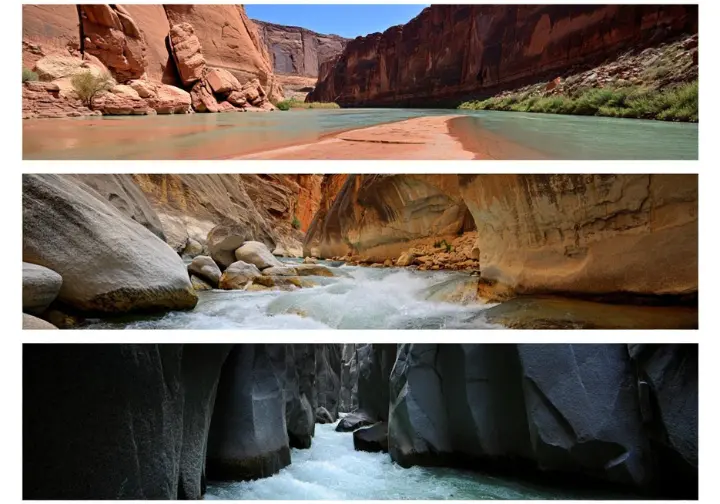
Getting acquainted with the primary rafting experiences near Moab is the first step. From gentle river rafting near Moab Utah suitable for families to intense, multi-day expeditions deep within Canyonlands National Park, the Colorado River offers distinct adventures. Let’s break down the core characteristics of the Daily Float, Cataract Canyon, and the high-adrenaline Westwater Canyon day trip.
Defining the Daily Float
The Daily Float, often navigating the scenic Fisher Towers section near Moab, UT, is defined by its ease of access. It features relatively mild whitewater, typically Class I-III rapids, making it welcoming for beginners and families. These trips usually last a half or full day, meaning they are easy to integrate into a larger Moab vacation itinerary without extensive planning. We often see families dip their toes into rafting here for the first time, finding the balance of excitement and scenery just right.
This raft trip emphasizes soaking in the iconic red rock landscapes. Views of Fisher Towers’ spires and Castle Valley, scenery made famous by Hollywood, unfold around each bend. The focus is less on extreme whitewater and more on a relaxing, visually stunning introduction to river rafting in the desert. It’s a chance to truly connect with the unique beauty of beautiful Moab.
The splashy rapids on the Daily Float section are often described as playful and fun. While mostly Class I-II, they can reach Class III during higher spring runoff. This makes the trip appropriate for a wide range of participants, including families with younger children, often with minimum ages around 5. Many outfitters offer both half-day river rafting (around 4-5 hours) and full-day (around 6-8 hours) versions.
Guided Daily Float trips usually include professional river guides, personal flotation devices (PFDs), rafts, and transport. Full-day trips often add a riverside lunch, enhancing the leisurely feel. Trips frequently launch from points like Hittle Bottom and take out downstream near Moab town, minimizing travel. While mild, you’ll still encounter named rapids like Onion Creek and the notable Whites Rapid, providing fun splashes.
Exploring Cataract Canyon Expeditions
Cataract Canyon presents a stark contrast; it’s a true wilderness expedition. These multi-day rafting trip adventures typically last 2 to 6 days, requiring camping along the riverbanks within the remote confines of Canyonlands National Park. This journey demands a significant commitment, taking you far from civilization for an immersive experience. Have you ever camped under a sky full of stars, miles from the nearest town?
The defining feature here is intense whitewater. A concentrated 14-15 mile stretch contains numerous Class III-V rapids known as the “Big Drops.” Many consider Cataract Canyon Utah’s biggest whitewater, sometimes rivaling the Grand Canyon during peak flows. It’s a siren call for thrill-seekers wanting a serious river expedition. The journey showcases vast, rugged wilderness landscapes, including the dramatic confluence of the Green and Colorado Rivers.
Due to the intensity and remoteness, minimum age requirements are higher, typically 10-12 years, often increasing to 14+ during high water. Planning involves complex logistics, especially the return from the remote take-out near Lake Powell, often requiring a scenic flight or long ground shuttle back to Moab. A common oversight is underestimating these return logistics; always clarify flight or shuttle details and costs upfront.
All Cataract trips require permits issued by the National Park Service. Commercial outfitters handle this for guests. Guided trips are typically all-inclusive, providing guides, rafts (often motorized for flatwater), meals, and camping gear. This offers a chance for deep immersion in the wilderness without needing your own specialized equipment.
Considering Westwater Canyon Thrills
Westwater Canyon offers a compelling blend: Class III-IV+ rapids rivaling Cataract’s intensity, packed into a single, action-filled day trip. It’s an excellent alternative for those seeking high-adrenaline whitewater without the multi-day commitment. Often called the “West’s best short whitewater trip,” Westwater provides a concentrated dose of excitement.
The canyon is known for challenging named rapids, including the notorious Skull Rapid, Funnel Falls, and Sock-It-To-Me. Successfully navigating these requires experienced guides and delivers a significant adrenaline rush. It appeals directly to thrill-seekers who find the Daily Float too tame but lack time for Cataract.
Located near the Utah-Colorado border, Westwater requires a longer shuttle from Moab than the Daily Float but is manageable within a full day (around 10 hours total). Logistics are simpler than Cataract’s. Similar to Cataract during lower flows, the minimum age is typically around 12 years old due to the rapids‘ intensity.
The scenery offers a different aesthetic, featuring a narrow gorge carved through dark Precambrian rock. This contrasts with the expansive red rock vistas of the Daily Float or Cataract’s deep canyons. The focus here is squarely on the challenging whitewater experience within this unique geological setting.
Choosing Your Ideal Adventure
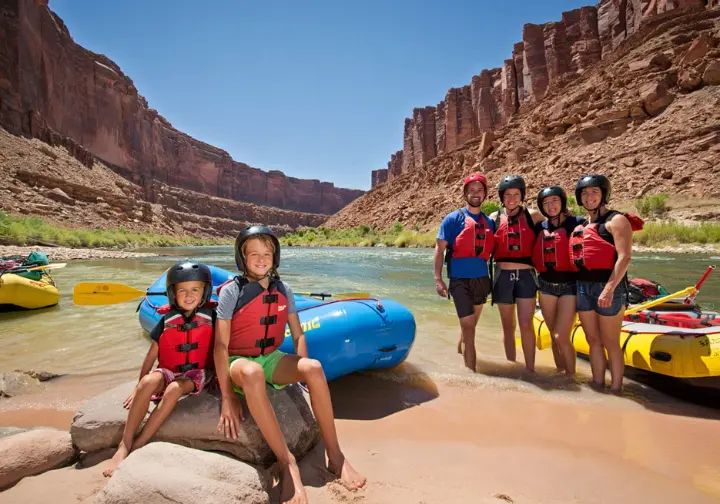
Selecting the right white water rafting Moab Utah experience hinges on your group’s preferences, abilities, and time. Think of it as choosing the right current to follow. This section helps evaluate factors like desired intensity, time commitment, age suitability, and the type of scenery you wish to embrace on your river journey.
Matching Trip Intensity to Experience
The Daily Float section (Fisher Towers) is ideal for first-time rafters, families with young children, or those seeking a relaxed scenic float with minimal risk. Its Class I-III rapids offer fun splashes without significant intimidation, making it the best rafting in Moab for a gentle introduction. It’s a comfortable current for dipping your paddle in.
Conversely, rafters seeking significant whitewater challenges should consider Cataract Canyon (Class III-V) for a multi-day expedition or Westwater Canyon (Class III-IV+) for an intense single-day rafting trip. Both demand a higher tolerance for adventure. Understanding the International Scale of River Difficulty (Class I-VI) is helpful. Daily Floats are mostly Class I-II, hitting III. Cataract and Westwater feature Class IV and potentially V rapids.
Be aware that water levels, especially during spring runoff (May-June), significantly impact rapid intensity. Cataract becomes particularly formidable, often leading outfitters to raise age limits. Even the Daily Float can present more challenging Class III conditions. How comfortable is your group paddling through potentially large waves? Regardless of the trip, guide expertise is crucial, especially in challenging sections. Remember that all whitewater rafting involves inherent risks.
Factoring in Duration and Commitment
Time is a major current guiding your choice. Half-day and full-day Daily Floats require minimal commitment, easily fitting into a varied Moab vacation. They offer a taste of rafting without dominating your schedule, perfect for a one-day Moab vacation activity.
Cataract Canyon trips (2-6 days) represent a significant time investment and often become the vacation’s centerpiece. This commitment allows for deep immersion in the Canyonlands wilderness but requires dedicated planning. Westwater strikes a balance, offering high intensity within a single, long day (around 10 hours including travel). It suits thrill-seekers short on time.
Consider time off the raft too. Daily Floats might include swim breaks or lunch. Cataract trips involve camping, meals, and exploring side canyons or hiking. Also, factor in travel time. Daily Floats have short drives. Westwater’s is longer. Cataract involves remote put-ins and complex return logistics (flight or long shuttle), adding considerably to the overall time commitment. Beyond time, Cataract requires a mental commitment to remote wilderness living.
Assessing Family and Group Suitability
The Daily Float (Fisher Towers) is generally the best, and often only, option for groups with young children, typically accommodating ages 5+. Its mild whitewater and scenic focus make it enjoyable and safe. We’ve guided countless families down this stretch, watching kids’ eyes light up at the first splashy wave – it’s a fantastic shared memory.
Families with teenagers (typically 12+ or 14+) and a shared appetite for adventure might consider Cataract or Westwater. These trips offer bonding through challenges but require assessing each member’s comfort. For groups with widely varying ages or adventure tolerances, the Daily Float is often most inclusive.
While extreme fitness isn’t required for guided trips, reasonable mobility is needed. Cataract trips involve camping and potentially more demanding hikes, requiring moderate fitness. No prior rafting experience is necessary for any guided trip, as guides provide instruction. What’s the primary goal for your group’s river trip – relaxation or thrill? Aligning the trip choice with shared group goals prevents disappointment.
Planning Your Moab Rafting Trip
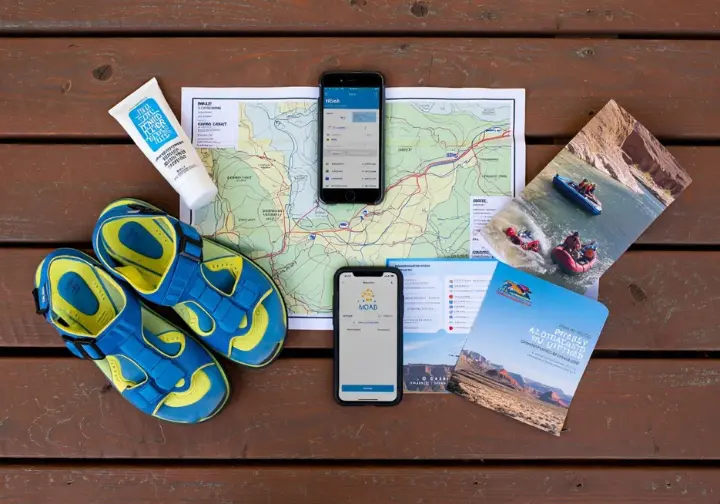
Once you’ve charted a course toward a specific type of trip, the focus shifts to practicalities. Navigating costs, understanding logistics (especially Cataract’s return journey), and considering seasonal shifts are like reading the river’s subtle signs before launching your boat. Let’s look at these key planning elements for your whitewater rafting in Moab.
Navigating Costs and Inclusions
Daily Floats are the most affordable guided rafting option in Moab, offering good value for a scenic river experience. Prices are straightforward, often listed per person. Cataract Canyon expeditions represent a premium investment due to their multi-day duration, all-inclusive nature (guides, food, gear), remote logistics, and park fees. Westwater day trips fall between, offering high adrenaline value for a single-day price.
Always verify inclusions. For Daily Floats, check about lunch on full-day trips. For Cataract, confirm if the price covers park fees, taxes, camping gear, and crucially, the return transport (flight or shuttle), which can be a substantial extra cost. Forgetting to budget for guide gratuities is common; factor it in when comparing trip costs across outfitters.
Cataract Canyon trips operate within Canyonlands National Park and involve permit fees managed through Recreation.gov. While outfitters handle this, the cost is factored into the trip price. When comparing outfitters for the same trip type, look closely at inclusions, boat types (motorized vs. oar/paddle), guide ratios, and itineraries to ensure you’re comparing equivalent value.
Understanding Trip Logistics (Especially Cataract Return)
Daily Float trips feature simple logistics: meet the outfitter in Moab, short shuttle to the put-in, enjoy the float, and a shuttle waits at the take-out. It’s a smooth, easy current to follow.
Cataract Canyon logistics are significantly more complex due to remote start and endpoints within Canyonlands. Outfitters handle transport to the put-in, but the return requires planning. Trips typically end near Lake Powell (often North Wash), known for being primitive, especially at low lake levels. Outfitters manage this, but it’s part of the expedition.
The return from Cataract back to Moab is usually via scenic flight (faster, often extra cost) or a long ground shuttle (several hours, potentially included but time-consuming). Clarify the method, cost, and timing. Westwater involves a longer shuttle than the Daily Float but avoids Cataract’s multi-day complexity and remote return issues.
Outfitters provide specific meeting points and times; punctuality is key. Understand what gear is provided (PFDs, helmets, splash gear, camping equipment) and what personal items you need to bring (sunscreen, hat, appropriate clothing/footwear). Outfitters usually supply detailed packing lists. Do you have a reliable waterproof bag for essentials?
Considering Seasonal Variations
Late spring (May-June) typically sees the highest water levels due to snowmelt, resulting in the most powerful rapids, especially in Cataract Canyon. This is prime time for thrill-seekers, but minimum ages may be higher, and some side hikes could be inaccessible due to high water potentially making the canyon formidable.
Summer (July-August) brings warmer temperatures ideal for swimming and generally lower, more moderate flows. Rapids become more technical (rock-dodging). This season often sees lower minimum age requirements, making it popular for families on Cataract trips. Check out options like a Fisher Towers Half-Day Rafting Day Trip for summer fun.
Fall (September-October) offers pleasant temperatures, lower water levels, and potentially fewer crowds. The river character is similar to summer. It’s beautiful with changing foliage along the banks. Most guided operations run spring through fall. Daily Floats often have the longest season. High water means bigger waves but can wash out smaller rapids; low water exposes rocks, making rapids technical. Before your trip, check current conditions with your outfitter.
Essential Moab Rafting Insights
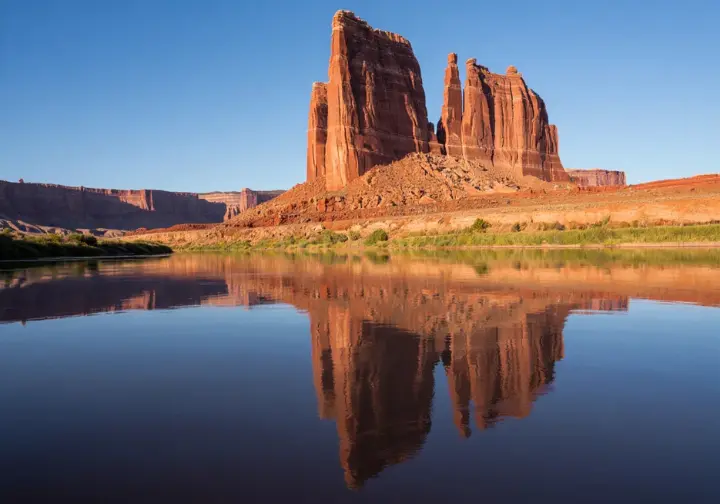
Deepen your understanding of the Moab river rafting scene with specifics about the landmarks defining each run, the agencies managing these waters, and reputable outfitters authorized to guide you, especially within the national park boundaries. Knowing these details adds another layer to appreciating your river adventure.
Key Rapids and Landmarks
The Daily Float section is famed for views of Fisher Towers’ sandstone spires, Castle Valley, and the La Sal Mountains backdrop – landscapes recognizable from classic Westerns. Key named rapids include Onion Creek, Professor Creek, and the often-highlighted Whites Rapid (Class III potential), providing memorable splashes suitable for most.
Cataract Canyon landmarks include the dramatic Confluence where the Green and Colorado Rivers merge, imposing canyon walls, and potential hikes to ancient Ancestral Puebloan ruins and pictographs. The “Big Drops” contain notorious Class IV-V rapids like Little Niagara, Satan’s Gut, and Imperial Rapid. It’s a truly wild ride through geological time.
Westwater Canyon’s defining feature is the narrow “Black Granite Gorge,” a stark contrast to typical red rock scenery. The intensity is packed into rapids like the famous Skull Rapid (Class IV+), Funnel Falls, and Sock-It-To-Me. Across all sections, keep an eye out for wildlife: blue herons, eagles, bighorn sheep, mule deer, and maybe even river otters can sometimes be spotted.
Reputable Outfitters and Permits
Operating commercial trips in Cataract Canyon requires authorization from the National Park Service (NPS), as it lies within Canyonlands National Park. Always choose an NPS-authorized concessioner for these trips. Sections used for Daily Floats and Westwater often fall under Bureau of Land Management (BLM) jurisdiction; reputable outfitters hold necessary permits here too.
Several well-established outfitters operate in Moab. Companies frequently mentioned and holding NPS permits include Western River Expeditions (Moab Adventure Center), Mild to Wild Rafting, Sheri Griffith River Expeditions, Adrift Adventures, NAVTEC Expeditions, OARS, World Wide River Expeditions, and Holiday River Expeditions. Choosing a reputable company is key for safety and quality.
Official tourism resources are reliable for finding licensed guides. Check sites like Discover Moab (official tourism) and Visit Utah for directories. Undertaking a private trip, especially through Cataract, requires obtaining a permit directly (NPS via Recreation.gov), involving lotteries and full responsibility for safety and logistics. Look for outfitters with professional websites, clear itineraries, safety protocols, and positive reviews as indicators of trustworthiness.
Finalizing Your Rafting Choice

With a clearer map of the options, intensity levels, logistics, and costs, let’s navigate to the final decision point. This recap highlights the core differences and provides actionable steps to help you confidently book your chosen Moab whitewater rafting adventure.
Actionable Next Steps
The fundamental choice is accessibility versus expedition. Choose the Daily Float for a convenient, scenic, family-friendly introduction near Moab. Choose Cataract Canyon for an immersive, multi-day wilderness journey with intense whitewater and remote camping. Westwater offers a single-day dose of high intensity.
Honestly assess your group’s desired thrill level and tolerance for adventure. Your available time and budget are critical constraints – Daily Floats are short and affordable; Cataract requires significant commitments of both. Don’t underestimate logistics, particularly the complex Cataract return.
Discuss the options again with your group, considering age limits, camping comfort (for Cataract), and shared goals. Once decided on a trip type (Daily, Cataract, Westwater) and duration, compare 2-3 reputable, authorized outfitters. Look at specific itineraries, dates, inclusions (especially Cataract return transport), and pricing. Don’t hesitate to contact outfitters directly with questions. Finally, especially for Cataract and during peak season, book your chosen rafting trips Moab Utah well in advance to secure your spot on the river.
Frequently Asked Questions
What’s the main difference between the Daily Float and Cataract Canyon? >
Which Moab rafting trip is best for families with young children? >
Where are the biggest rapids near Moab? >
Do I need prior rafting experience for these trips? >
We are a participant in the Amazon Services LLC Associates Program, an affiliate advertising program designed to provide a means for sites to earn advertising fees by advertising and linking to Amazon.com. As an Amazon Associate I earn from qualifying purchases. We also participate in other affiliate programs. The information provided on this website is provided for entertainment purposes only. We make no representations or warranties of any kind, expressed or implied, about the completeness, accuracy, adequacy, legality, usefulness, reliability, suitability, or availability of the information, or about anything else. Any reliance you place on the information is therefore strictly at your own risk. Additional terms are found in the terms of service.


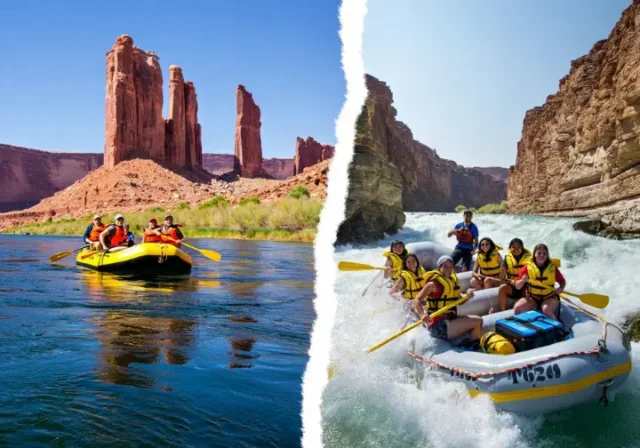

![Closest Whitewater Rafting to Denver Colorado? [Top Picks] Closest whitewater rafting to Denver, Colorado: Map highlighting Clear Creek near Idaho Springs as a top pick.](https://raftingescapes.com/wp-content/uploads/2025/04/01-closest-whitewater-rafting-denver-colorado-map-clear-creek-238x178.webp)




